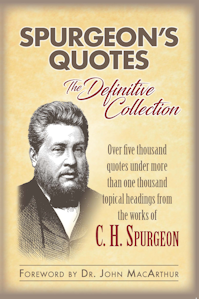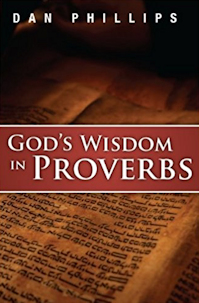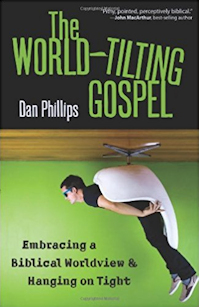My page-by-page scan of this book Baker sent me for review left me with these impressions.
First: one immediately notes that it is a heavy, weighty book. Literally. It weighs a lot! Just shy of 5 pounds. Hand it to someone without warning, and he'll lurch.
This is because the book is packed with really excellent photos and illustrations of various kinds, about 500 in number (not counting charts and maps). You'll see archeological finds and sites, maps, modern photos of locations and animals and such, tables, coins, ancient manuscripts. For instance, p. 267 has a DSS Psalms ms. showing the interspersal of paleo-Hebrew script when the name Yahweh is written; plus doezens of bas-reliefs, vistas, cups, coins. Visually and graphically, the book is a stunning achievement.
Does the content measure up?
First, a glance at the contributors. In my overview, I'm first impressed by the fact that I don't recognize most of the four pages of contributors, and many of those I do recognize don't excite me. Knowing nothing of the book going in, it isn't a plus to me that Peter Enns, Tremper Longman, and John Walton are contributors. On the other hand, Stephen Dempster, Dan Wallace, and Darrell Bock add articles to the volume. Maybe that's just me being out of touch, maybe not.
Most of the writing is carried by the editors, J's Daniel Hays and Scott Duvall, both professors at Ouachita Baptist University and published authors many times over.
Are the contents good? For the most part, well, I'll say they're not bad, and parts are quite good. The reading-level is very accessible without being at all juvenile, though some might not love every idiomatic turn. For instance, Song of Solomon is "a collection of mushy love songs," and is "a steamy, R-rated book" (303), that teaches marrieds that "when the lights go out, we should...be a little goofy and crazy about each other" (307). Truth, there; but no mention of any allusion to Christ, even sideways. I'll return to that.
Similarly, Jeremiah is "the Dirty Harry of the Old Testament" (335). Almost thirty years ago, I gave a similar distinction to Ezekiel, which I think fits him better; Jeremiah is not nearly Stoic enough.
There are a number of helpful elements, including sometimes sharp observations salted as "extras" at the bottom of the pages.
Joe Sprinkle has a helpful and very readable article on the important similarities between Hittite Treaties and the structure of Deuteronomy (109). I found the table of comparisons and contrasts between Rahab and Achan on 133 thought-provoking. The book does lean in conservative directions, such as affirming the authority of the Psalms' superscriptions (267) and the Solomonic authorship of Ecclesiastes (294). Also, there is an interesting sidebar on the fate of the Ark of the Covenant (339).
Mostly, the discussion of authorship-type issues is reliably conservative. Mostly. The section on Daniel simply doesn't notice the long-burning controversy, though its aside on the four kingdoms gets wobbly and accommodates liberalism or copping out altogether (375). The book's outline of the book of Daniel ignores the two languages, of which Robert D. Culver made very good sense many decades ago.
Pauline authorship of the Pastorals is affirmed, but it's hardly a trumpet blast ("Nevertheless, solid arguments remain in favor of Pauline authorship," 882), nor is the affirmation of Pauline authorship of Ephesians (836). The book is noncommittal on 2 Peter (936), which is disappointing.
A number of elements bother me, however. There is no help in understanding Creation or Flood, as to how to read them or how to relate them to the world we inhabit.
Maybe worse: don't look for help in seeing the OT in any Christ-centered or Gospel-centric way. There is no serious treatment (if any treatment at all) of Messiah in the sections on the Pentateuch. "Favorite verse" in Genesis is neither 3:15 nor 15:6, but 17:1 (55). Balaam's oracles are discussed, without even a sidelong glance at Messiah (100). "Favorite verse" in Leviticus is not 17:11, but 19:18 (89). First mention of Messiah that I noticed does not come until 269. But in summarizing "the Prophets in a Nutshell," Messiah finds no place whatever (312-313).
In fact, here's a perfect illustration. As far as it goes, the section "The Grand Story of the Bible" (19-22) is really quite good, quite descriptive of the flow of events and focii of the Bible as a whole. The outline of highlighted themes does say that Christ is the climax of the story. However, Christ comes in at point #11 in a series of 13, and Christ/Messiah has not been mentioned heretofore. So the grand story of the Bible is mostly tellable without reference to Jesus — though He is the "climax." This suggests that the Bible reads a bit like a mystery where the key character isn't brought out nor even hinted at until the last pages of the last chapter. That is one approach believers take to the Bible, but I think it is... less helpful than it could be. (I worked to develop that theme that at the Ashford Bible Conference last summer.)
Also, Bible quotations neither correct "LORD" to Yahweh nor preserve the capitalization device (e.g. 121), which underscores one of my ongoing objections to the practice. In fact, a text-box article on Yahweh is pretty poor, misstating that Yahweh "doesn't really mean 'Lord'" but saying they will "simply translate Yahweh as Lord" (65). Weak. Yahweh doesn't mean "Lord" in any sense, any more than "Dan" means "husband"; and "Lord" is not in any sense a "translation."
Peter Enns shows up to write on the dating of the Exodus, granting that a "literal reading" favors the early date, but leaning for the late date (59). Hardly a surprise, but not terrific.
Of course it will irk me that the section on "the Heart of Proverbs" completely misses the inclusio signals I discuss in my book, which are (A) really important to understanding the book, and (B) hardly top-secret. Plus (fast-forwarding) the note on 1 Corinthians 11 actually revives the old chestnut — you will think I am kidding, but I'm not — that the word head here "could refer to 'source'" rather than authority (792).
In sum: there is much that is helpful, and almost nothing truly harmful, in this book. It is easy reading, engaging, and graphically very impressive. A new reader to the Bible will find helpful information, and a more advanced student will enjoy the graphics without being too exercized over the shortcomings.
The "harm," if any, comes in terms of omission. One could wish for an equally beautiful and accessible book that takes a Christ-centered, emphatically theologically conservative approach to all of Scripture.
For such lavish illustrations, a price in the $20s is a good buy.














10 comments:
OK, but what about the new book by the Driscolls?
Nice review. Gracias.
I'm glad to see this largely positive review, because some of the things Baker has published over the past few years have given me pause.
Also had to chuckle at some of the "hip" references you say the authors use i.e. "Dirty Harry" etc. It reminded me of this linked story regarding a new Russian Bible translation. Apparently one of the female "scholars" working on this "translation" was a bit too carefree with her choices of words. Obviously the Baker Handbook doesn't do anything near, but I tend to think academic resources are much better being academic and less playful.
What's wrong with John Walton? I don't know any scholar more studied in ANE context to the biblical text.
Oh, Rich made a funny!!
(You were being funny, I assume.)
I'm with Solameanie on leaving the hip, pomo comments to less serious works, like college textbooks. Or at the very least, pick one major audience, know what how that audience reads/thinks, and design the book accordingly.
"What's wrong with John Walton? I don't know any scholar more studied in ANE context to the biblical text."
Probably this: "He espouses a view of creation that resonates with ancient near eastern mindsets, much like a temple dedication ceremony, and not a strictly material account of cosmological origins."
I didn't know you did impressions, Dan.
Airplane 2? I think you and I are the only one who flash on that. Which I did, when I wrote it. ("Sorry, I'm in IT Support, I don't do impressions")
I've been a believer for almost 2 years and have endeavored to study the scriptures to better know God and to shephard my family properly. I have an ESV MacArthur Study Bible and am blessed with a job where I can listen to sermons and teachings all day.
I would like to add some other tools to my study such as a Bible handbook, whole Bible commentary, Bible dictionary, and whatever may be of good use for myself. I'm aware of sites like biblos.com where I can read some free commentaries, lexicons, and other tools, but really am looking for some book recommendations to take me in further depth with my study. God bless!
Post a Comment